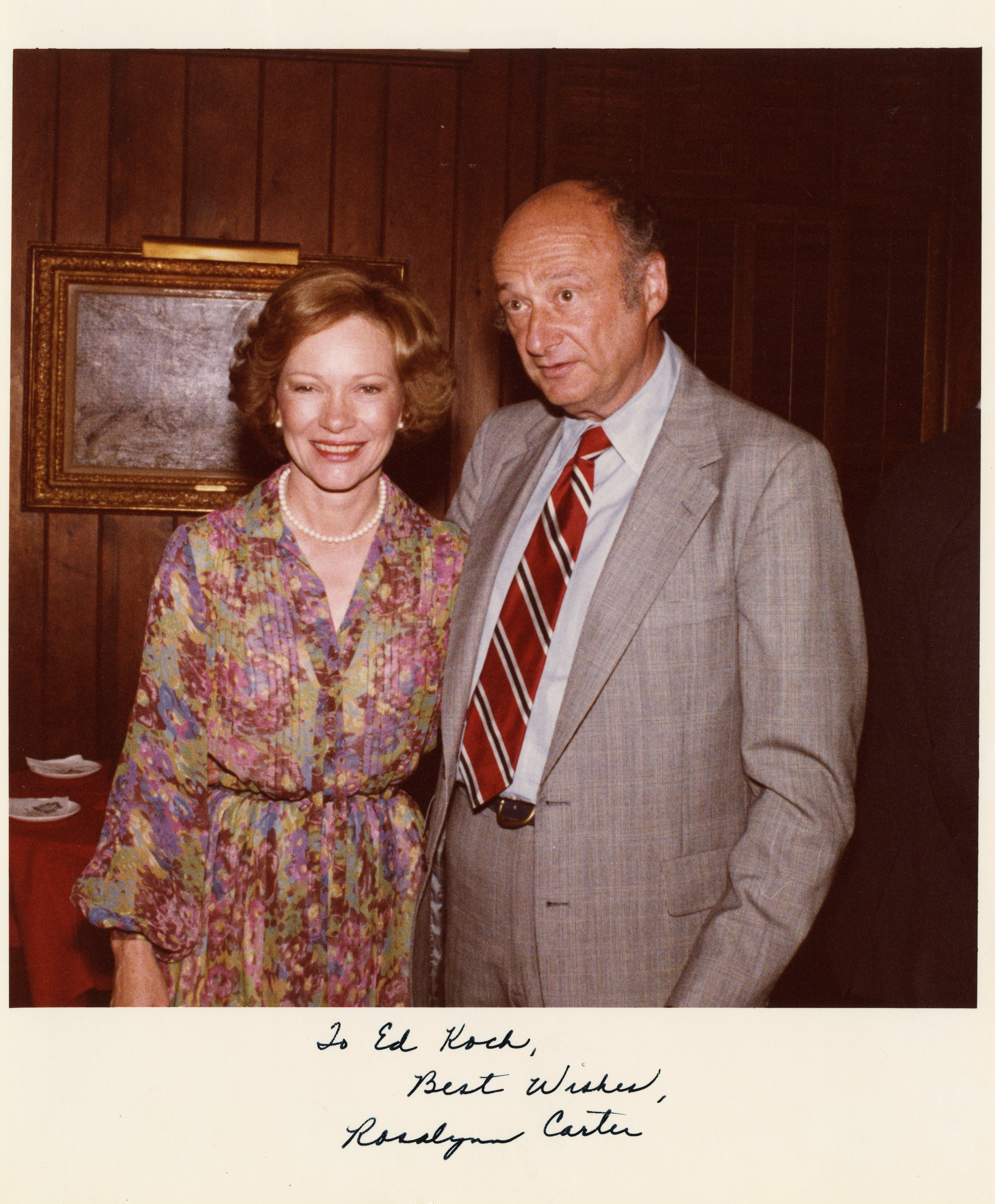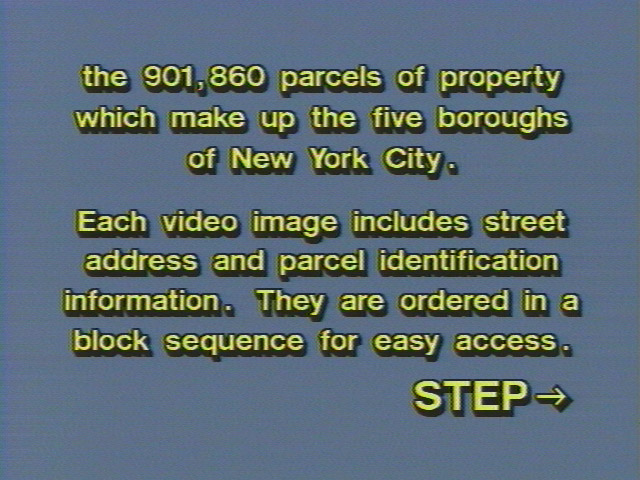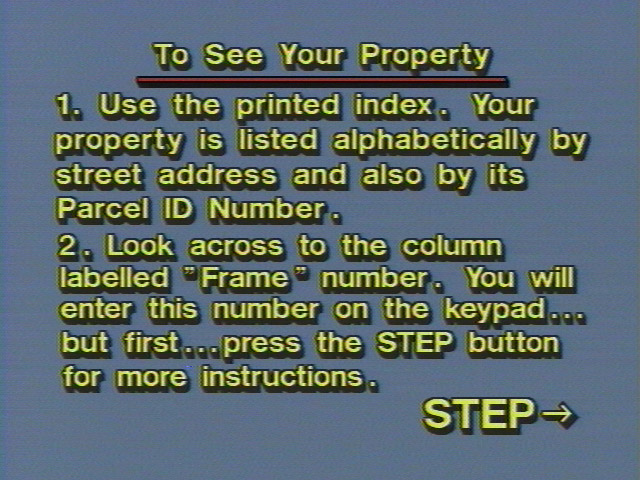Mayor Edward I. Koch with First Lady Rosalynn Carter, 1979. Mayor Edward I. Koch collection, NYC Municipal Archives.
Following her death on November 19, 2023, many news stories, obituaries, and reminiscences about former first lady Rosalynn Carter remarked on her exceptional role as confidant and advisor to Jimmy Carter throughout their more than seven decades of married life. “Serving as an equal partner to her husband, the president,” wrote New York Times reporter Azadeh Moaveni, “. . . she frequently attended Mr. Carter’s cabinet meetings and traveled abroad to meet with heads of state in visits labeled substantive, not ceremonial. She often sat in on the daily National Security Council briefings held for the President and senior staff.” [“Before Hillary Clinton, There Was Rosalynn Carter.” November 21, 2023.] Given her important role it should not be a surprise that there are photographs of Rosalynn Carter in the Mayor Koch photograph collection in the Municipal Archives.
(L-R) First Lady Rosalynn Carter, New York State Governor Hugh Carey, President Jimmy Carter, Mayor Edward I. Koch, Senator Daniel Patrick Moynihan, House Speaker Tip O’Neil, Treasury Secretary W. Michael Blumenthal, and Representative Mario Biaggi, August 8, 1978. Mayor Edward I. Koch photograph collection, NYC Municipal Archives.
On a hot summer day, President Jimmy and First Lady Rosalynn Carter stood before a cheering crowd in front of City Hall after a bill-signing ceremony that gave New York City $1.65 billion in Federal loan guarantees as part of the effort to avoid bankruptcy. The Times story reporting on the event noted that “Mr. Carter signed the measure on a mahogany desk that had been used by George Washington when he was President, and as Mr. Carter pointed out, New York was the nation’s capital and Washington was a swamp.” [“Carter Signs Aid Bill for New York at Gala Celebration at City Hall,” August 9, 1978.]
(Left to Right) Maureen Connelly (Press Secretary to Mayor Koch), President Jimmy Carter, First Lady Rosalynn Carter, and Mayor Edward I. Koch, Washington, D.C., June 1979. Mayor Edward I. Koch collection, NYC Municipal Archives.
Letter to Mayor Koch from Jack H. Watson, Jr., at the time, Assistant to the President for Intergovernmental Affairs, but who would become White House Chief of Staff to President Carter, August 14, 1979. Mayor Edward I. Koch Collection, NYC Municipal Archives.
Joan Mondale, Vice President Walter Mondale, President Jimmy Carter, First Lady Rosalynn Carter, Amy Carter, and Senator Ted Kennedy, on the stage at the Democratic National Convention, Madison Square Garden, New York City, August 1980. Mayor Edward I. Koch photograph collection, NYC Municipal Archives.
Smiling faces on the dais belie drama behind the scenes. Earlier that summer, Mayor Koch’s request for additional federal support from the Carter Administration had not achieved the desired result. The President’s attempt to rescue the fifty-two Americans held hostage in Iran had stalled, and Senator Ted Kennedy’s presidential-run threatened to upend the convention. In the end, Carter prevailed, won the nomination, but lost to Ronald Reagan in the general election.
Correspondence, Jimmy Carter to Mayor Edward I. Koch, May 16, 1984 on behalf of Habitat for Humanity, regarding a building at 742-44 East 6th Street. Mayor Edward I. Koch Collection, NYC Municipal Archives.
Correspondence, Mayor Edward I. Koch to Jimmy Carter, June 18, 1984, regarding the building at 742-44 East 6th Street. Mayor Edward I. Koch Collection, NYC Municipal Archives.
Jimmy and Rosalynn Carter continued their close collaboration during their post-White House years. The Habitat for Humanity organization was one of their most enduring endeavors. In 1984, they wrote to Mayor Koch and asked for his assistance with their work to rehabilitate a building on the Lower East Side of Manhattan.
President Jimmy Carter with Commissioner Anthony Gliedman of HPD, at a Habitat for Humanity project at 742 East 6th Street, Manhattan, July 1985. Photographer Leonard Boykin, HPD Photograph Collection, NYC Municipal Archives.
Commissioner Anthony Gliedman of HPD, talking to Rosalynn Carter at a Habitat for Humanity project at 742 East 6th Street, Manhattan, July 1985. Photographer Leonard Boykin, HPD Photograph Collection, NYC Municipal Archives.












